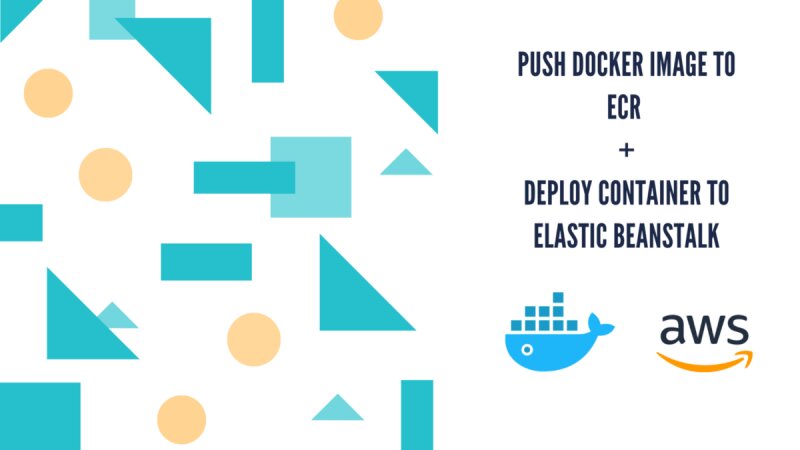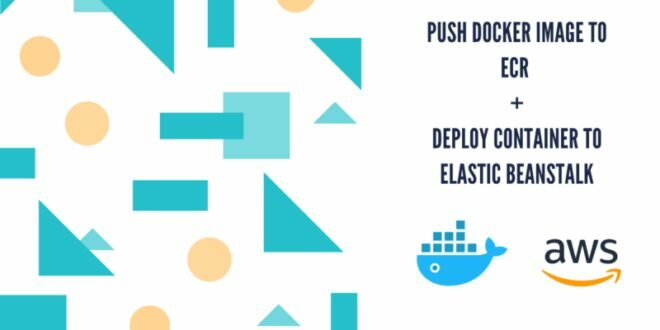
Aws Deploy Docker Image – Architecture Cloud Operations & Migrations for Gaming Marketplace News Partner Network Smart Business Big Data Business Productivity Cloud Enterprise Strategy Cloud Financial Management Computing Contact Center Containers Database Desktop & Streaming Application Developer Tools DevOps Front-End Web & Mobile
HPC Industries Integration and Automation Internet of Things Machine Learning Multimedia Messaging and Targeting Microsoft Networking and Content Delivery Open Source Workloads Public Sector Quantum Computing Robotics Security Disks SAP Storage Training and Certification
Aws Deploy Docker Image

中国版 Edition Francaise Deutsche Edition 日本版 한국 에리스 Edicao em Portugues Edicion en Espanol English Edition Version in Russian Edisi Bahasa Indonesia Turkce Surum
Rapid Docker On Aws
There are many reasons why containers have become popular since Docker democratized access to the basic Linux primitives that make up “
Possible. One reason is that containers aren’t tied to a specific infrastructure or stack, so developers can easily move them (usually from their laptops, across the data center, and into the cloud) . While we spend most of our time talking about container orchestrators these days, let’s not forget that containers’ true portability is guaranteed by their packaging and standard runtime requirements, not just choreography. IAML that surrounds them (although it is true that this IAML choreography creates a certain amount of operational overload and gravity).
According to Docker, “[Compose] is currently used by millions of developers and with over 650,000 Compose files on GitHub. There’s a good reason for that; Docker Compose is an elegant yet very simple way to describe your application stack in containers. This format has been and will continue to be used by thousands of developers to run applications that require multiple Docker containers and a communication service. Often these developers are also looking for a convenient way to run their code on .
With that in mind, Docker also began collaborating on the Docker Compose Open Specification earlier this year to create a path for developers using the Docker Compose format to deploy their applications to Amazon ECS and Fargate. In July, Docker released a beta version of Docker Desktop that incorporated these features, and on September 15, Docker released the updated experience to its Docker Desktop stable channel.
Deploy A React App On Aws Lightsail: Testing, Docker, Docker Compose, Nginx & Github Actions
With all this background, let’s get our hands dirty. The rest of this blog is structured around two main topics:
In addition to these topics, there is a third and final section with some practical considerations and suggestions regarding this integration.
Four years ago, I created a simple (but representative of real life) application that I could use as a base for learning new technologies. Instead of focusing on abstract technology and trying out the accompanying tutorial, I wanted to focus on “my application” and try to use the technology in my defined, existing context. After all, that’s what real customers do. Their goal is not to successfully launch an instance, but rather to apply the technology they are evaluating to their own application stack. I just wanted to mimic user adoption patterns of technology.

Enter Elb. Ielb is a traditional web application consisting of four components: a user interface, an application server, a cache server, and a database.
Automate Docker Container Deployment To Aws Ecs Using Cloudformation
As I started to learn different container-based solutions over the years, I applied them to Ielb. Today, you can deploy a containerized version of Ielb with Docker Compose, Kubernetes, and ECS. This required me to create all of the IAML choreography for each of the orchestrators (in the specific order I mentioned) while using the same container images.
“What if I didn’t want or couldn’t spend the time reauthorizing the original Docker Compose IAML file into a native ECS IAML file?” Would this Docker Compose/ECS integration work for Ielb?
Interestingly, my test worked immediately with a Docker Compose file I created over 4 years ago.
Let me show you what the developer experience looks like. We’ll get to the mechanics of how it works behind the scenes later. For now, all you need is Docker Desktop and an account. For this test, I’m using Docker Desktop (stable) version 2.5.0.1.
How To Deploy Application On Aws Ecr Using Jenkins
The first thing you need to do is clone the Ielb repository and change to the deploy directory which includes the Compose IAML file in the repository (
Compose the IAML file in the repository. This will launch the Yelb app on your workstation by default:
. If you come from a Docker background, you’ve probably used this workflow thousands of times over the years. Nothing new here.
As we often say, a picture is worth 1000 words. Here’s a visual of the flow we just ran (note that nothing is deployed to the cloud yet):
Docker Enterprise Edition (ee) On Aws
Now let’s see how to apply the same stack to ECS. To do this, we need to prepare our Docker Desktop environment.
First, we’ll create a new Docker context so that the Docker CLI can point to another endpoint. By default, Docker points to the so-called local context
(this is the Docker runtime on your machine), but we will add the Amazon ECS context using the command
A note on credentials: if you’re already familiar, you probably already have your CLI environment ready with default or named profiles. It’s ok, the Docker CLI can use those credentials. Otherwise, the Docker workflow will allow you to either read the environment variables with your credentials (_ACCESS_KEI_ID and _SECRET_ACCESS_KEI) or find those credentials and store them for you (in $HOME/./credentials) .
How To Deploy Docker Containers
Profile credentials must have sufficient permissions to deploy the application in . This includes permissions to create, for example, VPCs, ECS tasks, load balancers, etc.
Notice how I’m now using the main docker binary to do this, instead of the docker-compose binary I used above for local deployment. The docker binary now comes with extended docker build functionality (more on that later).
Component is exposed on a specific port of a specific endpoint. In the example above, when I point to the

I see the same application (described in the same Docker Compose file) deployed on ECS and Fargate.
Deploying Docker Containers On Aws: Elastic Beanstalk Vs Ecs Vs Eks
So far we have focused on how you can reuse a 4 year old Docker Compose file. Now let’s see how this integration can improve the experience of future apps.
Integrating Docker Compose with Amazon ECS can improve the developer experience in at least a few dimensions: writing less IAML and being able to test the application locally (while connecting to cloud services).
The best way to explain this is to focus on another example. Imagine you need to deploy an application that uses the following architecture:
The application (running in an ECS task) reads messages from the SKS queue and processes files in two EFS volume folders.
Getting Started With Docker Cloud
If you were to code the infrastructure details above using CloudFormation, you would easily have to write several hundred lines of IAML.
If you were to use Docker Compose to define this application, it would be as simple as writing these 20 lines:
Allows the developer to assign an inline IAM policy to bind to the application (as an ECS task role).

The app is now running and all I had to do to deploy it was write 20 lines of IAML.
How To Deploy Workato Opa As A Microservice On Kubernetes
In terms of improving the development experience, as an engineer, however, you might be wondering how to quickly iterate on this application on your desktop without having to deploy to the cloud while experimenting with rapid changes code. The beauty of this integration is that it maps standard Docker builds to builds. let’s take it
Has been created. However, when used with a context, the Docker volume object is mapped to an EFS object and therefore an EFS volume is created.
And point to the local Docker runtime. Although the Compose file is still semantically correct, if we did this we wouldn’t have access to the services we need to interact with to test my application (namely SKS in my example above). This is because my application would not be allowed to read from the SKS queue, for example.
Local Docker context, but will automatically integrate local ECS container endpoints. This is a container that simulates instance metadata services, including the IAM credentials it gets from
Deploy Applications On Amazon Ecs Using Docker Compose
. In the cloud, selling IAM credentials is done by adding an IAM role to an ECS task. Locally, this functionality is simulated by local ECS container endpoints and allows the application to run seamlessly.
Note that application logs are available on the local console to stdout instead of Cloudwatch (which happens when you deploy to ). Also note how the boto client (SDK for Python) is correctly initialized to connect to SKS
Deploy docker to aws, deploy docker container to aws, deploy docker image to aws ec2, deploy docker image to server, deploy docker image to aws, aws deploy docker container, deploy docker container on aws, deploy docker image aws, ec2 deploy docker image, deploy docker image to azure, deploy docker image, deploy docker image on aws
 GoInspiration | Best Forex, Stock, Gadget, and Internet Information Apps
GoInspiration | Best Forex, Stock, Gadget, and Internet Information Apps